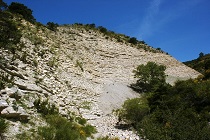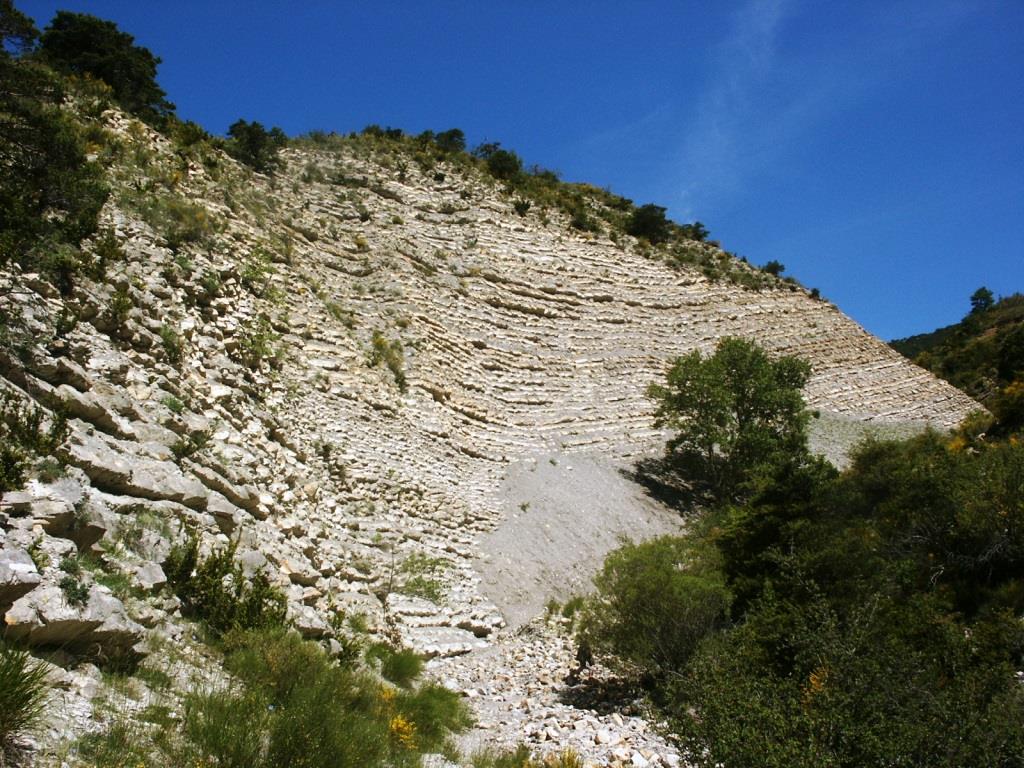 The project entitled "Holostratigraphy and palaeoenvironmental changes in the interval of the Berriasian / Valanginian boundary (140-135 Ma) in France and Poland", headed by Jacek Grabowski, PhD, of the Polish Geological Institute-NRI, will be carried out as part of the next edition of the Polish-French scientific research program PHC Polonium.
The project entitled "Holostratigraphy and palaeoenvironmental changes in the interval of the Berriasian / Valanginian boundary (140-135 Ma) in France and Poland", headed by Jacek Grabowski, PhD, of the Polish Geological Institute-NRI, will be carried out as part of the next edition of the Polish-French scientific research program PHC Polonium.
The program supports the mobility of cooperating research teams. In the current edition of the program, 20 projects were selected.
The project headed by Jacek Grabowski, Ph.D., will carry out detailed stratigraphic correlation between the Polish and French basins based on palaeoenvironmental trends and events, using an interdisciplinary methodology based on bio- and magnetostratigraphic dating. The research team also includes other experts from PGI-NRI: Izabela Ploch, PhD, and Andrzej Chmielewski, MA.
The Berriasian / Valanginian boundary interval (Early Cretaceous, ca. 140-135 Ma) was a period of significant paleoecological change, involving changes in biological productivity and faunal composition in shallow-water carbonate sedimentation environments. These changes affected the geometry of carbonate platforms as well as carbonate sedimentation in deep-sea basins. Relatively frequent changes in climate moisture were most likely associated with periodic glaciations in higher latitudes. Paleoclimatic events and trends in the Early Cretaceous can be used as stratigraphic tools, although their patterns in individual paleogeographic domains (e.g., the Polish Basin and northwestern Tethys) clearly vary.
The main objective of the project is to develop a detailed high-resolution holostratigraphic scheme (using bio-, chemo-, cyclo- and magnetostratigraphic tools) of the deep-sea successions of the Vocontina Basin (south-eastern France), the Lower West Tatra conglomerate succession basin and the Polish Basin (central Poland). This scheme will be used to prepare a proposal for a Global Stratotype Section and Point (GSSP) boundary pattern for the International Commission on Stratigraphy (ICS) Subcommittee on Cretaceous System Stratigraphy. In addition, a detailed chronostratigraphic scheme will be the basis for dating and calibration of paleocanographic and paleoenvironmental changes as determined by changes in terrigenous material input, bottom water oxygenation, and fluctuations in calcareous nanoplankton species composition and frequency.
The project will be carried out in cooperation with Universite de Rennes 1 - Geosciences Rennes in France, Universite Claude Bernard in Lyon and Universite de Bretagne Occidentale in Brest. The Polish team will be responsible for magnetostratigraphic studies, detailed magnetic susceptibility profiling (MS), gamma-ray spectrometric (GRS) profiling, chemostratigraphy based on major and trace element content, and calpionellid biostratigraphy (microfossils). The French team will undertake cyclostratigraphy, sedimentology, biostratigraphy of ammonites and calcareous nannofossil, as well as carbon isotopic stratigraphy.
The Polish-French research will cover a stratigraphic interval from the upper part of the Upper Berriasian (ammonite zonation Alpillensis, calpionellar subzones D2-D3, nanozone NK-2B, magnetozones M16n-M15n) to the lower part of the Lower Valanginian (Thurmanniceras pertransiens and Neocomites neocomiensiformis ammonite zonations, calpionellar zonation E, NK-3A nanozone, M14r to M12r magnetozones). The main focus of the study in France (Vocontine Basin) will be the Vergol profile, which is one of the candidates for a stratotype profile of the Berriasian / Valanginian boundary.

Valanginian basal formation in the Montclus profile, southeastern France
Additionally, the Montclus profile which already has extensive documentation of palaeoenvironmental changes in the upper Berriasian and lower Valanginian will be developed. In Poland, the profile of the Kryta Valley in the Western Tatras and the profile of the Żychlin IG-3 drilling in the Polish Basin will be studied in detail.
The project is of great scientific importance, both for the integration of different stratigraphic methods in the Berriasian / Valanginian boundary interval, and for testing interdependencies and interactions between climate change (glaciations, moisture changes), sea-level and paleoproductivity fluctuations, carbon isotopic composition of carbonate sediments and changes in Earth's orbital parameters. The Polonium program is implemented in Poland by the National Agency for Academic Exchange (pol. Narodową Agencję Wymiany Akademickiej – NAWA), and in France by the Ministry of Europe and Foreign Affairs (fr. Ministère de l'Europe et des Affaires étrangères – MEAE) and the Ministry of Higher Education, Research and Innovation (fr. Ministre de l'Enseignement supérieur, de la Recherche et de l'Innovation – MESRI). The next Polonium program call will start in April of 2021.
Text and photos: Jacek Grabowski
Translated by Tomasz Trzpil (PGI-NRI)














 PGI-NRI offer
PGI-NRI offer Mineral resources of Poland
Mineral resources of Poland  Oil and Gas in Poland
Oil and Gas in Poland 




 Subscribe to RSS Feed
Subscribe to RSS Feed